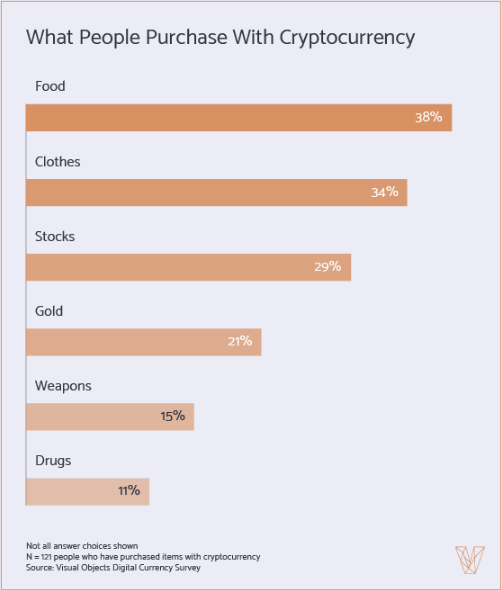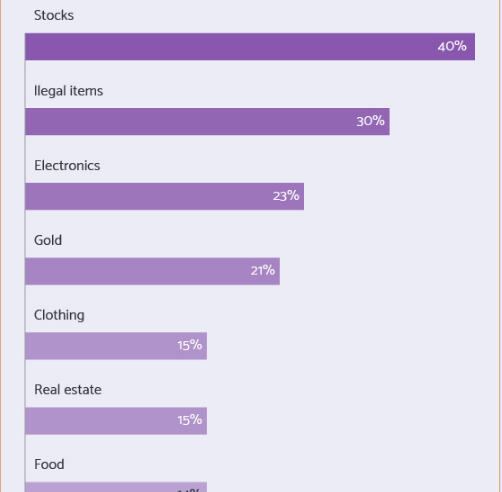A survey published by research firm Visual Objects has found food and clothing purchases to be the most common use cases for cryptocurrencies.
The findings highlight a significant disparity between the perceptions and reality of how cryptocurrency is used. Many who responded to the survey said the top use cases for crypto were trading and illicit activities.
The survey gathered this data from 983 respondents in the United States who are “familiar with digital currency,” including over 120 who have made purchases using crypto assets.
Survey predicts drugs and stocks as top use-cases for crypto
40% of respondents said that price speculation would be crypto’s dominant use-case, followed by purchases of “illegal items” (30%) and electronics (23%). The lowest-scoring options were clothing and real real estate with 15% each, and food purchases at 14%.
With only 16% of respondents indicating that they had invested in cryptocurrencies, the results may offer insight into assumptions held by those observing the industry. Visual Objects polled survey participants who had purchased crypto regarding their virtual currency spending habits, finding the data to be in stark contrast to public expectations.
Food topped the list of most common purchases made with cryptocurrency at 38%, followed by clothes at 34%, and speculation at 29%. Narcotics and firearms scored the lowest with 11% and 15% respectively.

Crypto payments are also popular
A recent survey conducted by The Economist and Crypto.com also found ordinary payments are a major use case for crypto assets.
34.2% of total respondents cited online payments as the top application for virtual currencies, including 35.2% of respondents from the Crypto.com platform. In response to the findings, Crypto.com COO Eric Anziani told Cointelegraph:
“This is a strong indicator of a trend that shows digital currencies are on the right track for mass adoption, with its potential to enhance the existing payment infrastructure and efficiency.”




Comments (No)